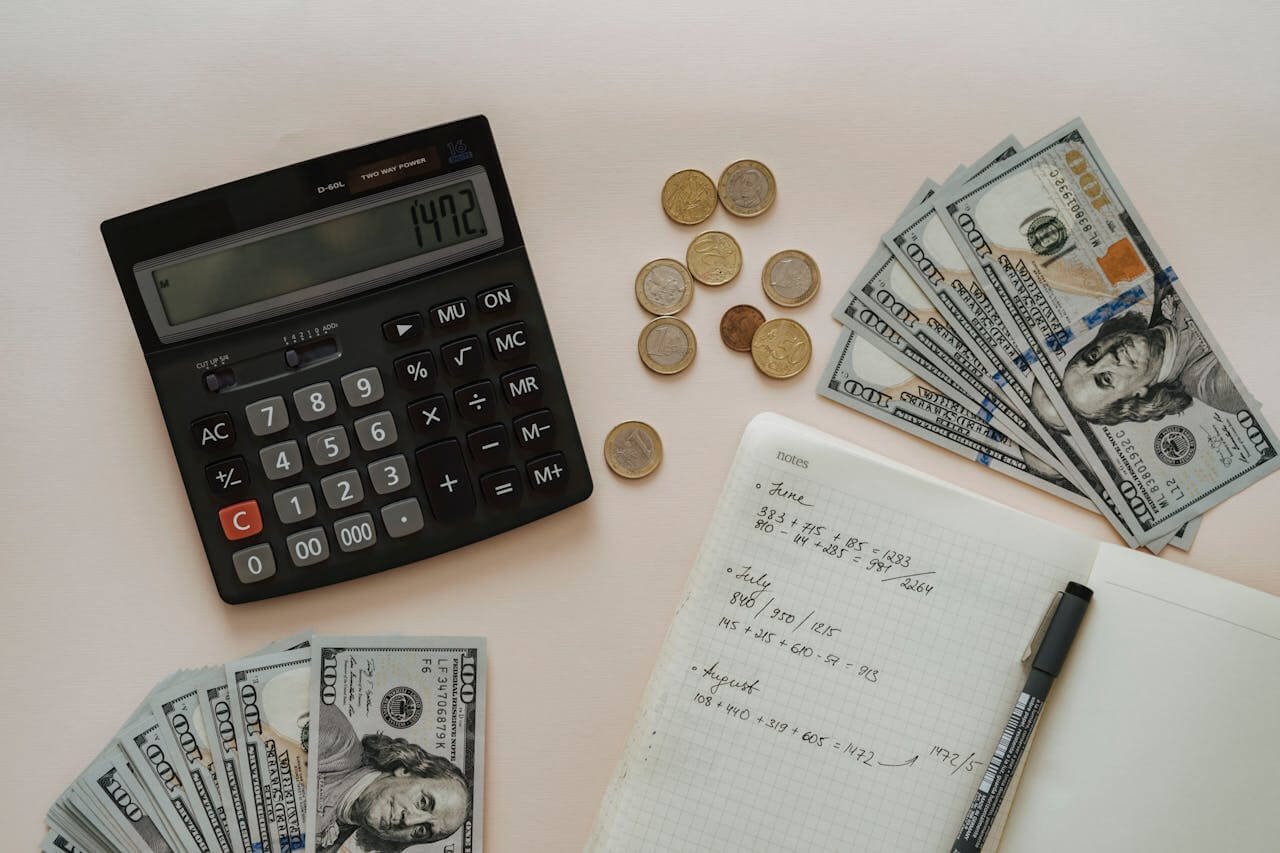This future value calculator from Calculator Bank helps you determine the value of an investment or savings in the future, based on initial amount, interest rate, and time.
What is Future Value
Future value represents what your investment will be worth at a specific future date. It factors in your starting amount, ongoing deposits, interest rate, and timeframe to project your end balance. This calculation shows how compounding changes your money, with returns generating their own returns as time passes.
Unlike simple addition, future value calculations reveal the accelerating growth curve of investments. This principle sits at the heart of retirement strategies, college funds, and wealth building, showing why money invested today carries more potential than tomorrow.
Understanding the Future Value Calculator
Initial Investment
Initial Investment is the starting capital you commit to your investment journey. This foundational amount is the basis upon which all future growth is calculated. When you enter your initial investment, include all funds that will be present at the very beginning of your investment timeline. This Future Value Calculator uses this principal sum as the first building block in the compounding process.
Monthly Contribution
The monthly Contribution reflects the disciplined, regular additions you plan to make to your investment over time. These systematic contributions show the power of consistent investing and dollar-cost averaging. When you specify a monthly amount, you accept a fundamental wealth-building strategy that can dramatically increase your investment outcomes.
The Future Value Calculator factors these contributions into your growth trajectory, showing how smaller, regular investments compound alongside your initial principal. This approach allows investors to build more wealth even when starting with limited capital, as the consistency of contributions often proves more important than their size.
Annual Interest Rate
Annual Interest Rate means the yearly percentage return you expect your investments to generate. This critical variable directly affects the compounding effect and determines how quickly your money grows over time. When you select a rate, consider historical returns for your chosen investment vehicles while remaining sure about market performance.
Higher rates create exponentially larger future values due to the nature of compound interest. The calculator applies this rate annually to both your principal and any accumulated interest from previous periods, demonstrating how your money makes money, which then makes more money—the essence of compound growth.
Investment Period
The Investment Period defines the duration, in years, over which you’ll allow your money to grow. This timeframe critically influences your investment’s final value due to the exponential nature of compounding. Longer investment timeframes dramatically increase returns, especially in later years when compound interest exhibits its most powerful effects.
If you consider your investment period, balance long-term growth potential against your financial goals and life plans. This Future Value Calculator uses this period to determine how many annual compounding cycles to apply, illustrating how patience and time may change modest investments into substantial wealth.
Future Value
Future Value shows the projected total worth of your investment at the end of your specified period. This figure represents the culmination of your initial investment, regular contributions, and the compounding effect of interest over time. The calculation accounts for both the principal components and the interest earned on your entire investment portfolio.
Understanding your future value helps establish real expectations about your financial goals, whether saving for retirement, education, or other important life events. This forward-looking metric changes abstract saving into concrete financial targets, allowing you to adjust your strategy if the projected outcome doesn’t align with your needs.
Total Contributions
Total Contributions summarizes all the money you’ve personally invested throughout the entire period, combining your initial investment with the sum of all monthly contributions. This total represents your “skin in the game”—the capital you’ve committed to growing. When you compare total contributions to future value, you will quickly assess how much of your final amount came from your pocket versus what was generated through investment returns. This metric provides a useful image of the efficiency of your investment strategy and helps illustrate the remarkable difference between simply saving money and investing it for growth.
Total Interest Earned
Total Interest Earned quantifies the additional wealth generated solely by investment returns—the cash your money made for you. This amount represents the difference between your future value and total contributions, showing you the true power of compound interest over time. When you’re examining this metric, you see the tangible benefit of investing rather than keeping cash idle. For many investors, this figure eventually exceeds their contributions, marking the point where their money works harder than they do.
Investment Growth Chart
The Investment Growth Chart visually shows wealth accumulation over time, plotting the year-by-year progression from initial investment to final future value. This graphical representation powerfully demonstrates the non-linear nature of compound growth, showing how investment returns accelerate in later years. The visualization helps investors understand why patience is crucial—the most dramatic growth typically occurs toward the end of longer investment periods.
Which of the following processes can be used to calculate future value for multiple cash flows?
The process used to calculate future value for multiple cash flows is the compounding of each cash flow from its deposit date to the end of the investment period.
When dealing with multiple cash flows that occur at different times (like regular contributions), each amount is compounded for its specific time period. For example, your initial investment compounds for the full period, while a contribution made in year 3 only compounds for the remaining years.
This approach requires the following:
- Taking each individual cash flow
- Applying the compound interest formula to each flow based on when it entered the investment
- Summing all the individually compounded amounts to find the total future value
This calculation is what the Future Value Calculator does automatically when processing both your initial investment and ongoing monthly contributions.

